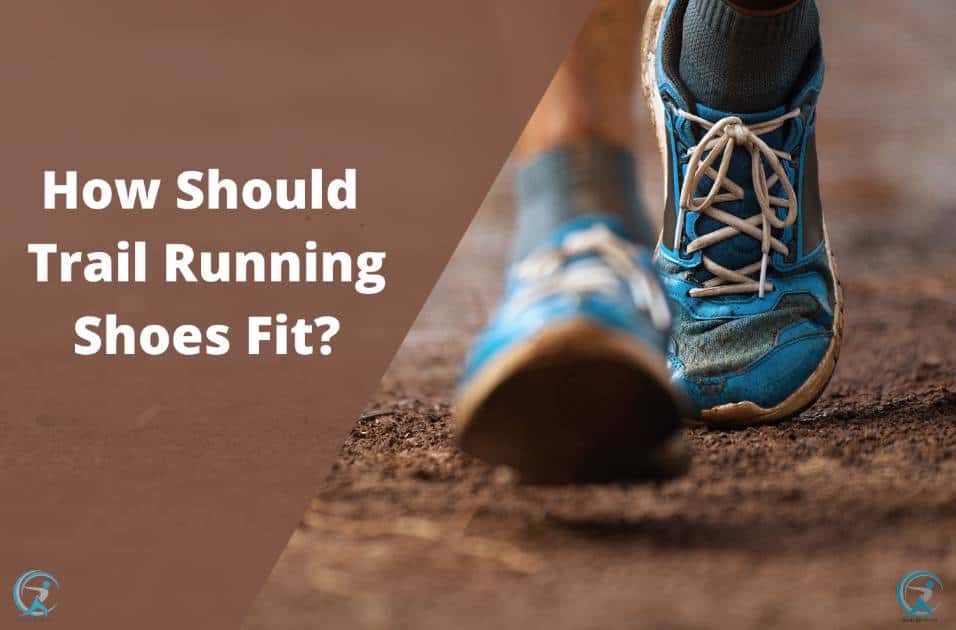Finding the right fit for trail running shoes isn’t just about comfort—it’s about safety, performance, and enjoying your time on the trails. Unlike road running shoes, trail footwear needs to handle uneven terrain, protect against rocks and roots, and keep your feet secure on steep inclines and descents.
The perfect fit can make the difference between an exhilarating adventure and a blister-filled nightmare. Let’s dive into everything you need to know about getting the ideal trail running shoe fit.
Key Takeaways
- Trail running shoes should have a thumb’s width of space between your longest toe and the shoe’s front to accommodate foot swelling on long runs
- The heel should feel snug and locked in to prevent slippage on technical terrain and downhill sections
- Most trail runners benefit from sizing up half to one full size compared to their regular shoes
- The midfoot should feel secure but not constrictive, with enough room for natural foot movement
- Trail shoes require a balance between protection (rock plates, reinforced uppers) and flexibility for adapting to uneven ground
- Different trail surfaces demand different fits—more precise for technical terrain, more forgiving for longer ultramarathons
Why Trail Running Shoe Fit Matters More Than You Think
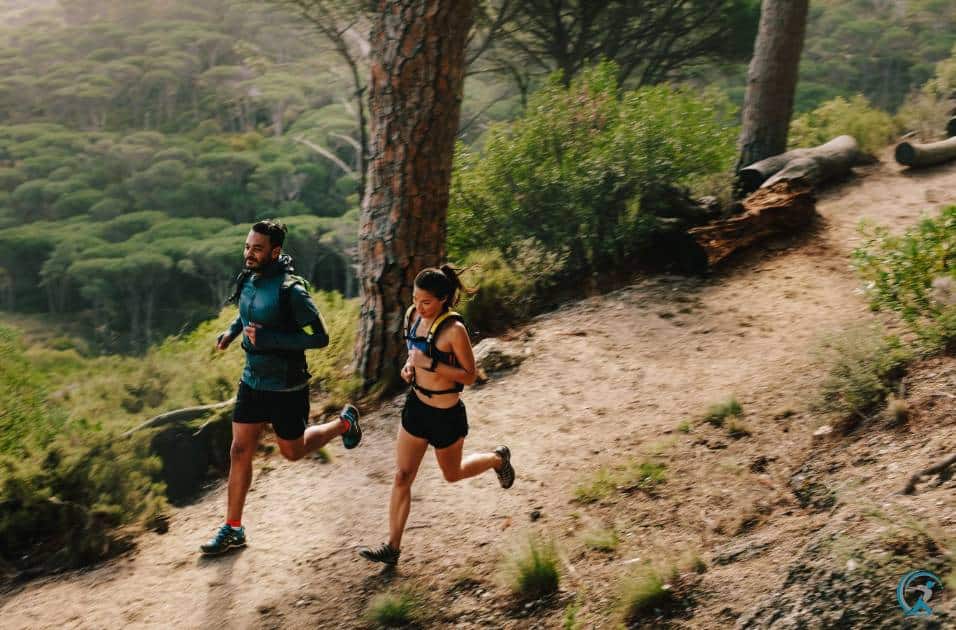
I remember my first trail race—a muddy 25k through dense forest with more elevation than I’d bargained for. I wore my trusty road runners, half a size too small because I liked that “locked-in” feeling. Big mistake. By kilometer 15, my toenails were screaming, my heels had blisters the size of quarters, and I was hobbling more than running.
Trail running demands more from your footwear than road running. Your feet swell more, move differently, and face greater impact forces from uneven terrain. The right fit isn’t just about comfort—it’s about preventing injuries, maintaining stability, and allowing your feet to adapt to whatever the trail throws at you.
Understanding the Anatomy of Trail Running Shoes
Before diving into fit specifics, let’s break down what makes trail shoes different from regular running shoes:
Outsole: Deeper lugs (usually 3-5mm) for traction on mud, rocks, and loose terrain
Midsole: Often firmer with rock plates for protection against sharp objects
Upper: More durable materials with reinforcements to prevent tears
Toe box: Usually wider to allow for toe splay and foot swelling
Heel counter: Typically more structured for stability on uneven ground
These design differences directly impact how trail shoes should fit compared to road shoes. What feels “right” in a road shoe might feel too loose or too tight on the trails.
The Perfect Trail Running Shoe Fit: A Comprehensive Guide
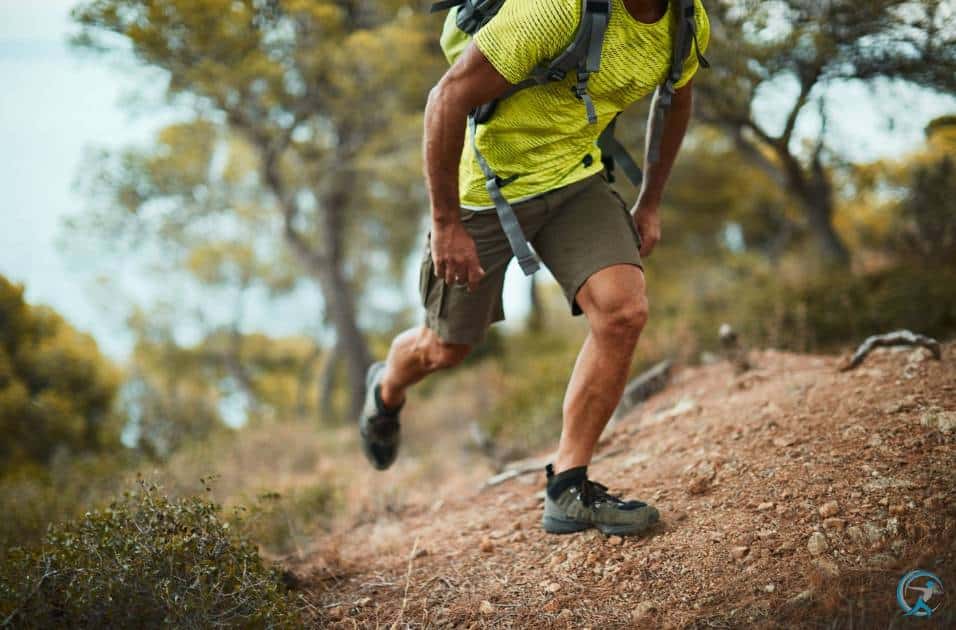
Toe Box: Room to Breathe and Move
The toe box is perhaps the most critical area for proper fit in trail running shoes. Unlike road running, trails involve steep descents where your toes can slam into the front of your shoes repeatedly.
The ideal fit: You should have approximately a thumb’s width (about 1-1.5cm) of space between your longest toe and the end of the shoe. This might feel too roomy when you first try them on, but this space is essential for:
Accommodating foot swelling during long runs
Preventing black toenails on downhill sections
Allowing natural toe splay for balance on uneven terrain
If you’re planning ultramarathons or very long trail runs, consider even more space—up to 1.5 thumb widths—as feet can swell significantly over many hours of running.
Midfoot: Secure But Not Constricting
The midfoot area should feel snug but not tight. You want enough security to prevent your foot from sliding around inside the shoe, especially on technical terrain, but not so tight that it restricts blood flow or natural foot movement.
The ideal fit: When laced properly, you should feel the shoe hugging your midfoot without pressure points. You should be able to wiggle your toes freely while feeling secure through the arch and midfoot.
Many trail shoes offer specialized lacing systems that allow you to adjust the midfoot fit independently from the forefoot. Take advantage of these features to dial in your perfect fit.
Heel: Locked and Loaded
Heel slippage is the enemy of trail running. On steep ascents and descents, any movement in the heel area can lead to blisters and reduced control.
The ideal fit: Your heel should feel firmly locked in place with no up-and-down movement when walking or running. However, the heel cup shouldn’t dig into your Achilles tendon or ankle bones.
If you’re experiencing heel slippage even with the right size shoe, try using a “heel lock” or “runner’s loop” lacing technique. This creates an extra anchor point that secures your heel without overtightening the rest of the shoe.
Width: Finding Your Goldilocks Zone
Foot width varies dramatically between runners, and thankfully, many trail shoe brands now offer multiple width options.
The ideal fit: Your foot should sit naturally within the shoe without spilling over the midsole (too narrow) or sliding side-to-side (too wide). The widest part of your foot (the metatarsal heads) should align with the widest part of the shoe.
Brands like Altra and Topo are known for wider toe boxes, while Salomon and La Sportiva typically run narrower. Finding the right brand for your foot shape can be as important as finding the right size.
Sizing Up: The Trail Runner’s Secret
Here’s something most experienced trail runners know: you almost always need to size up compared to your regular shoes or even your road running shoes.
I learned this the hard way after losing toenails on my first few trail adventures. Now I automatically go half to full size larger for trail shoes, and my feet thank me for it.
Why size up?:
Feet swell more on trails due to increased impact and longer time on feet
Downhill running pushes feet forward in the shoe
Trail runs often last longer than road runs
Thicker socks are common for trail running, especially in cold or wet conditions
Most specialty running stores recommend at least a half-size increase for trail shoes. For ultramarathons or runners with wider feet, a full size up might be appropriate.
Trying Before Buying: The Essential Fitting Process
While online shopping is convenient, trail shoes are one category where in-person fitting is invaluable. Here’s the ideal fitting process:
Shop late in the day when your feet are naturally more swollen
Wear your actual trail running socks (which are often thicker than regular running socks)
Try multiple sizes (your regular size, half size up, and full size up)
Test on inclines if possible — many specialty stores have ramps to simulate uphills and downhills
Walk, jog, and hop to test how the shoes feel in motion
Pay attention to pressure points — they rarely “break in” and usually get worse
If in-store fitting isn’t possible, order multiple sizes and test them thoroughly at home before hitting the trails. Most online retailers offer generous return policies for unworn shoes.
Special Considerations for Different Trail Types
The “perfect fit” can vary depending on the trails you run and the distances you cover.
Technical, Rocky Trails
For technical terrain with lots of rocks, roots, and quick direction changes:
Slightly snugger midfoot fit for precise control
Secure heel lock to prevent slippage on technical descents
Still maintain adequate toe box room to prevent toe bang
Long-Distance Trail Running and Ultramarathons
For ultra distances (50k and beyond):
More generous sizing to accommodate significant foot swelling
Wider toe box to prevent blisters from toe rubbing
Still maintain heel security to prevent blisters from friction
Wet and Muddy Conditions
For consistently wet or muddy trails:
Slightly snugger fit overall as wet shoes can cause more movement and friction
Consider waterproof models, but remember they fit differently than non-waterproof versions
Ensure heel security is perfect to prevent slippage in muddy conditions
Common Trail Running Shoe Fit Problems and Solutions
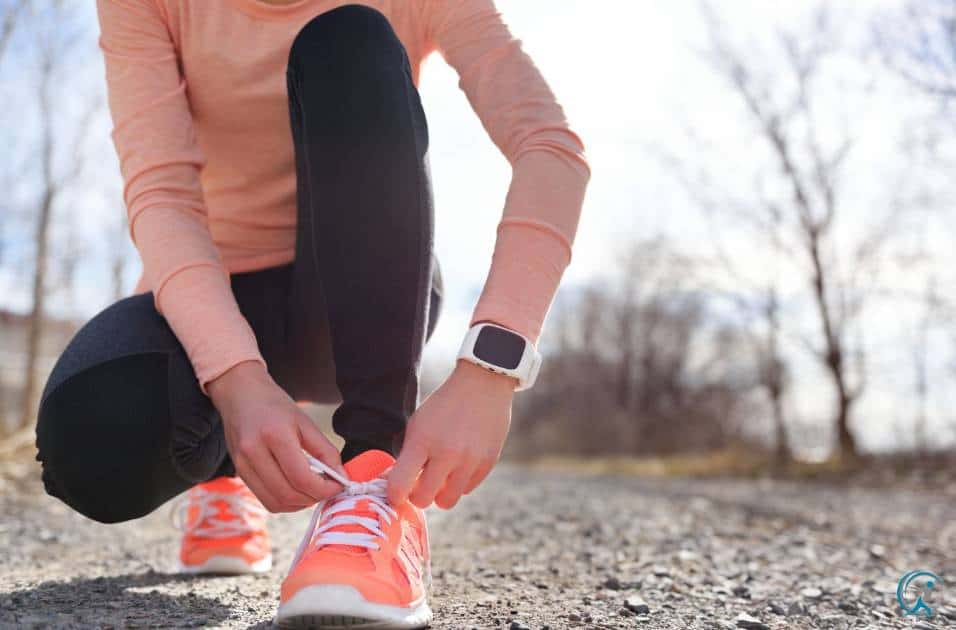
Problem: Heel Slippage
Solution: Try heel-lock lacing, add a thin heel insert, or consider a different shoe model with a more structured heel counter. If you’re struggling with proper running form, check out our guide on how to improve your running form for additional tips.
Problem: Black Toenails
Solution: Size up, ensure adequate toe box room, and check that your lacing isn’t allowing your foot to slide forward on descents. For more on preventing running injuries, visit our article on prevent common outdoor running injuries.
Problem: Midfoot Pressure or Pain
Solution: Try different lacing patterns to redistribute pressure, or consider shoes with more volume in the midfoot area. Understanding proper running form can also help reduce midfoot issues.
Problem: Toe Box Too Tight
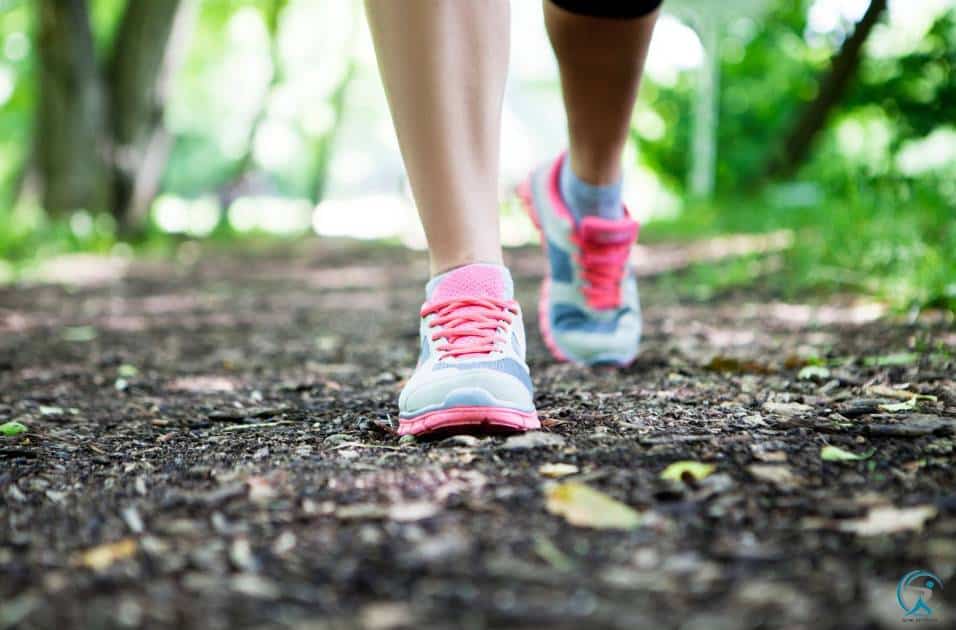
Solution: Look for brands known for wider toe boxes (Altra, Topo, Brooks) or try wide-width options if available. For more on selecting the right shoes, read our guide on how to choose the right running shoes.
Problem: Arch Pain or Plantar Fasciitis
Solution: Ensure proper arch support for your foot type, consider aftermarket insoles, and make sure your shoes aren’t too flexible for your needs. Our article on running recovery methods offers additional advice for managing foot pain.
Brand-Specific Fit Characteristics
Different brands have distinct fit characteristics that can help guide your selection:
Salomon: Generally narrower fit, especially in the midfoot, with secure heel hold
Hoka: Wider toe box with plush cushioning and a more generous fit overall
Altra: Zero-drop platform with the widest toe boxes in the industry
Brooks: Medium width with good volume, true-to-size fit
Saucony: Medium width with a secure midfoot and moderate toe box room
La Sportiva: European fit tends to run narrow and small (often need to size up)
Topo: Wide toe box with secure midfoot, similar to Altra but with more drop options
For more detailed information on trail running shoes, check out our guide on Brooks trail running shoes and Nike trail running shoes.
The Saucony Peregrine: A Case Study in Trail Shoe Fit
The Saucony Peregrine is one of the most popular trail shoes on the market, known for its versatility across different terrains. Let’s use it as a case study for fit considerations:
The Peregrine typically runs true to size or slightly small. Most runners find sizing up by half a size provides the ideal fit for trail running. The shoe offers a medium-width toe box with a secure midfoot and heel.
For the Peregrine specifically:
If you have narrow feet: Your regular size might work well
If you have medium-width feet: Consider a half-size up from your regular shoes
If you have wide feet: Size up a full size or look for the wide-width option
The Peregrine’s heel counter is fairly structured, providing good stability on technical terrain. The toe box, while not as wide as Altra or Topo, offers adequate room for most foot shapes when sized correctly.
When to Replace Your Trail Running Shoes
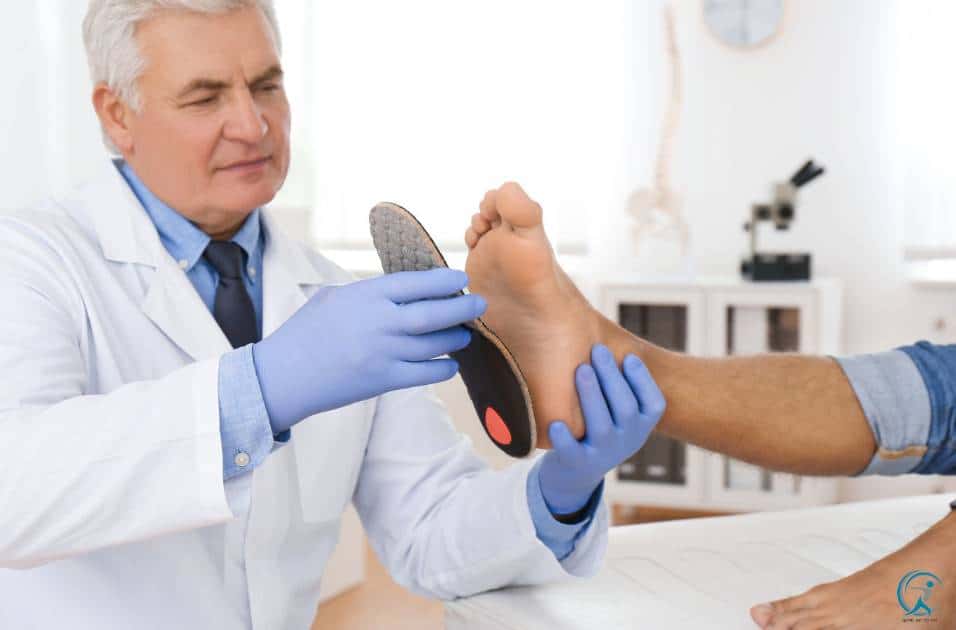
Even perfectly fitted trail shoes don’t last forever. Trail running is harder on shoes than road running, and the fit characteristics change as shoes wear down.
Signs it’s time for new trail shoes:
Compressed midsole (shoes feel flat or less responsive)
Worn outsole lugs (reduced traction)
Upper tears or significant stretching (changed fit and reduced security)
Consistent new pain or blisters that weren’t there before
Most trail shoes last between 300-500 miles, though this varies based on:
Your weight and running style
Trail conditions (rocky trails wear shoes faster)
Shoe construction and materials
For more on running gear maintenance, check out our guide on essential outdoor running gear.
Final Thoughts: Finding Your Perfect Trail Companion
Finding the perfect trail running shoe fit is a personal journey. What works for one runner might not work for another, even with identical foot measurements. Be patient, be willing to try multiple options, and listen to your feet.
Remember that the “perfect” trail shoe fit might feel slightly different from what you’re used to in road shoes. Trust the process, and soon you’ll be flying down trails with confidence, comfort, and the right shoes on your feet.
The trails are calling—make sure your feet are ready to answer. For more trail running advice, explore our comprehensive guide on trail running adventures and trail running terrains.
References
As a veteran fitness technology innovator and the founder of GearUpToFit.com, Alex Papaioannou stands at the intersection of health science and artificial intelligence. With over a decade of specialized experience in digital wellness solutions, he’s transforming how people approach their fitness journey through data-driven methodologies.
